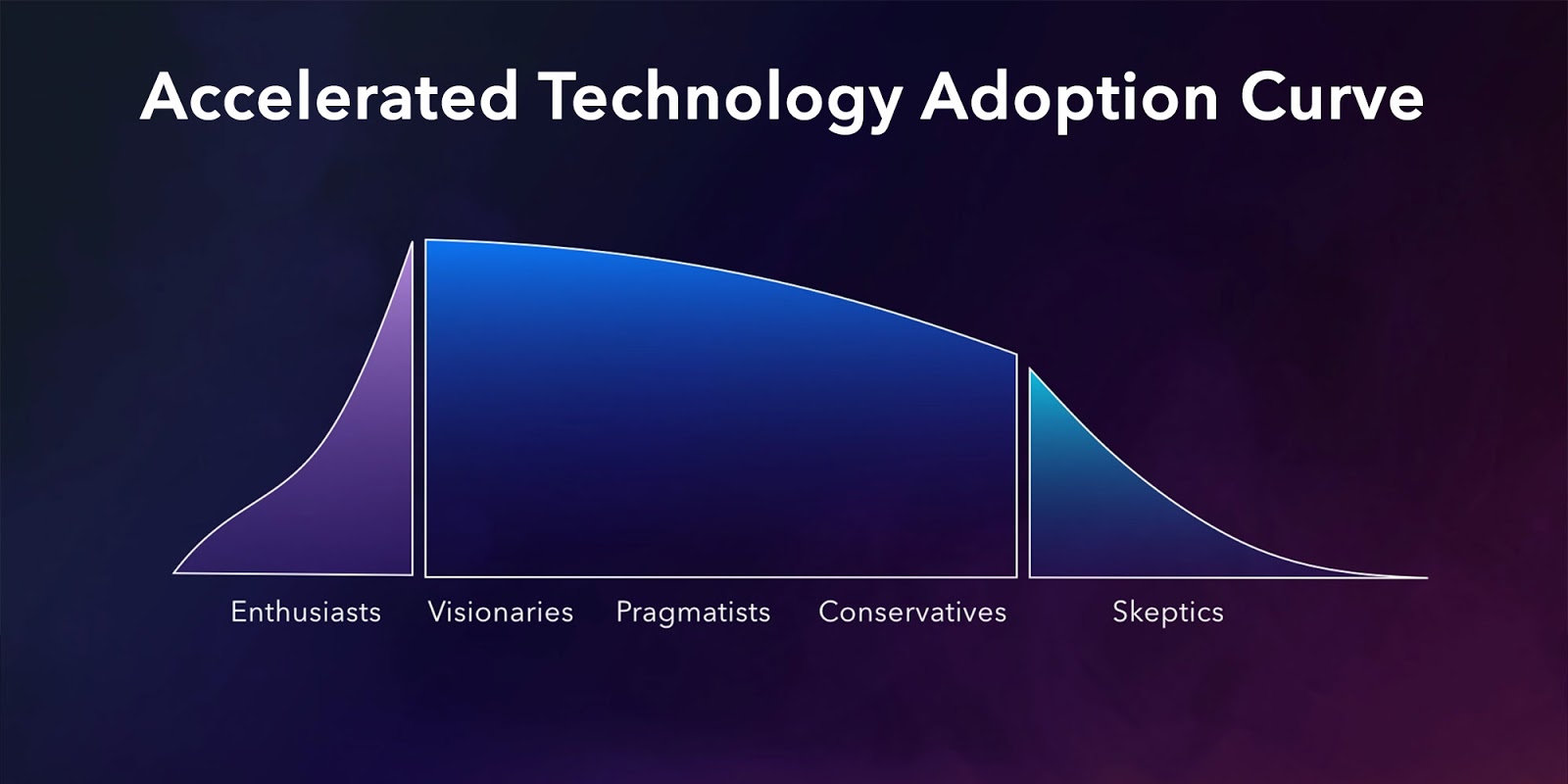The financial services landscape is witnessing an unprecedented transformation as major institutions pivot toward blockchain-based infrastructure. At the forefront of this revolution stands Circle Internet Financial, whose Circle blockchain technology has become the cornerstone for numerous banking giants, payment processors, and fintech innovators. From JPMorgan to Visa, global financial powerhouses are integrating Circle’s solutions into their core operations, signalling a fundamental shift in how money moves across borders and systems. This mass adoption isn’t coincidental—it represents a calculated response to inefficiencies that have plagued traditional finance for decades. Understanding why these institutions are betting billions on Circle’s blockchain technology reveals critical insights about the future of global finance and the inevitable digitisation of monetary systems.
The Foundation: What Makes Circle’s Blockchain Technology Different?
Revolutionary Infrastructure Built for Financial Institutions
Circle’s blockchain technology stands apart from competitors through its enterprise-grade architecture specifically designed for financial compliance and institutional requirements. Unlike purely decentralised blockchain networks, Circle has engineered a hybrid approach that preserves the transparency and efficiency of blockchain while meeting regulatory demands that traditional financial institutions cannot compromise on.
The company’s flagship innovation, USD Coin (USDC), operates as a fully reserved stablecoin backed one-to-one with U.S. dollar assets. This digital currency runs on multiple blockchain networks, providing financial institutions with programmable money that settles transactions in seconds rather than days. The technology eliminates intermediaries, reduces counterparty risk, and operates 24/7/365—capabilities that legacy payment rails simply cannot match.
Compliance-First Architecture
Finance giants prioritise regulatory compliance above all else, and Circle’s blockchain technology was architected with this reality as a foundational principle. The platform includes built-in Know Your Customer (KYC) and Anti-Money Laundering (AML) capabilities that allow institutions to maintain compliance while leveraging blockchain’s efficiency advantages.
Circle holds multiple regulatory licenses and registrations, including state money transmission licenses across the United States and registration as a Money Services Business with FinCEN. This regulatory positioning provides financial institutions with the confidence needed to integrate blockchain technology without exposing themselves to compliance vulnerabilities.
The Economics of Blockchain Adoption for Major Financial Institutions
Cost Reduction at Unprecedented Scale
Traditional cross-border payments carry substantial costs—correspondent banking fees, currency conversion charges, and operational overhead can consume 5-7% of transaction values. Circle’s blockchain technology reduces these costs to fractions of a per cent by eliminating intermediary banks and enabling direct peer-to-peer settlement on blockchain networks.
Goldman Sachs estimates that blockchain technology could reduce infrastructure costs across the securities services industry by $11-12 billion annually. For individual institutions processing trillions in annual transactions, even marginal efficiency improvements translate to hundreds of millions in annual savings. This economic imperative drives adoption more powerfully than technological curiosity.
Speed as Competitive Advantage
In modern finance, speed equals competitive advantage. Traditional wire transfers require 3-5 business days for international settlement, creating liquidity traps and operational inefficiencies. Circle’s blockchain technology settles transactions in minutes regardless of geographic distance or banking hours.
This speed advantage enables financial institutions to offer superior services to clients, reduce capital requirements tied up in settlement lag, and respond more dynamically to market opportunities. Treasury departments at major corporations increasingly demand real-time settlement capabilities—a requirement that legacy systems cannot fulfil, but blockchain technology delivers inherently.
Real-World Implementation: How Finance Giants Deploy Circle’s Solutions
Cross-Border Payment Transformation
Major international banks have integrated Circle’s blockchain technology into their cross-border payment operations, fundamentally reimagining how money moves between countries. Instead of correspondent banking relationships requiring multiple intermediary banks, institutions now execute direct blockchain-based transfers using USDC as the settlement medium.
This transformation proves particularly valuable for remittance corridors and emerging market access. Traditional banking infrastructure in developing economies often lacks the sophistication required for efficient international connectivity. Circle’s blockchain technology bypasses these limitations entirely, providing instant access to global financial systems through internet connectivity and blockchain infrastructure.
Treasury Management Revolution
Corporate treasury departments manage vast sums moving between subsidiaries, suppliers, and operational accounts across multiple countries and currencies. Circle’s blockchain technology enables these treasury operations to occur with unprecedented efficiency and transparency.
Multinational corporations now maintain USDC treasury reserves that can be deployed instantly to any global location, converted to local currency through integrated exchange partners, or held as dollar-denominated assets earning yield. This flexibility transforms working capital management from a logistical challenge into a strategic advantage.
Securities Settlement Infrastructure
The securities industry represents perhaps the most promising application for Circle’s blockchain technology. Current settlement cycles (T+2 in most developed markets) create systemic risk, capital inefficiency, and operational complexity. Blockchain-based settlement enables the instantaneous transfer of both securities and payments, collapsing multi-day processes into atomic transactions.
Major exchanges and clearinghouses actively pilot blockchain settlement systems built on Circle’s infrastructure, recognising that the existing post-trade infrastructure represents a competitive vulnerability as digital-native financial platforms emerge.
The Network Effect: Why Mass Adoption Accelerates
Liquidity Begets Liquidity
As more financial institutions adopt Circle’s blockchain technology, USDC liquidity deepens across exchanges, payment processors, and blockchain networks. This liquidity growth creates a reinforcing cycle—institutions join because liquidity exists, and their participation increases liquidity further.
Network effects in payment systems prove extraordinarily powerful. Visa and Mastercard dominate precisely because universal acceptance makes them universally useful. As USDC achieves similar ubiquity within financial institution operations, late adopters face increasing competitive pressure to integrate or risk operational disadvantages.
Interoperability Advantages
Circle’s blockchain technology operates across multiple blockchain networks, including Ethereum, Solana, Avalanche, and others. This multi-chain strategy provides financial institutions with flexibility in choosing blockchain infrastructure while maintaining interoperability across different platforms.
This interoperability contrasts sharply with proprietary blockchain implementations that lock institutions into single-vendor ecosystems. Finance giants value optionality and avoid vendor lock-in, making Circle’s open, multi-chain approach strategically attractive compared to alternatives.
Risk Management and Security Considerations
Enterprise-Grade Security Infrastructure
Financial institutions cannot compromise on security, and Circle’s blockchain technology implements multiple layers of protection, including multi-signature wallets, hardware security modules, and institutional custody solutions. Circle’s security architecture has withstood years of operation securing billions in digital assets without suffering material breaches—a track record that builds institutional confidence.
The company employs continuous security auditing, penetration testing, and threat modelling to identify vulnerabilities before they can be exploited. This proactive security posture aligns with the risk management requirements that financial institutions demand from critical infrastructure providers.
Disaster Recovery and Business Continuity
Blockchain’s distributed architecture provides inherent disaster recovery advantages over centralised systems. Circle’s blockchain technology operates across globally distributed nodes, eliminating single points of failure that plague traditional financial infrastructure. Even catastrophic datacenter failures cannot disrupt blockchain operations, providing business continuity assurance that resonates with institutional risk management teams.
Regulatory Tailwinds Driving Adoption
Evolving Regulatory Clarity
Regulatory frameworks for digital assets have matured substantially, with agencies like the Office of the Comptroller of the Currency issuing guidance clarifying that national banks may use stablecoins for payment activities. This regulatory clarity removes adoption barriers that previously prevented financial institutions from deploying Circle’s blockchain technology at scale.
The European Union’s Markets in Crypto-Assets (MiCA) regulation establishes comprehensive frameworks for stablecoin issuers, providing additional regulatory certainty for European financial institutions considering blockchain adoption. As regulatory frameworks solidify globally, institutional adoption accelerates proportionally.
Central Bank Digital Currency Compatibility
Central banks worldwide are researching and piloting central bank digital currencies (CBDCs), with many exploring architectures compatible with existing stablecoin infrastructure. Circle’s blockchain technology positions adopting institutions to seamlessly integrate with future CBDC systems, providing forward compatibility as monetary systems digitise.
Financial institutions recognise that CBDC implementation will fundamentally reshape monetary infrastructure within the coming decade. Early adoption of compatible technology like Circle’s platform positions these institutions advantageously for the inevitable transition.
Competitive Dynamics Forcing Strategic Adoption
Fintech Disruption Pressure
Digital-native fintech companies built on Circle’s blockchain technology from inception operate with cost structures and capabilities that traditional financial institutions cannot match using legacy infrastructure. Companies like Revolut, Wise, and numerous crypto-native platforms leverage blockchain settlement to offer superior pricing and functionality.
Established financial institutions face existential pressure to match these capabilities or risk losing market share to digital competitors. Adopting Circle’s blockchain technology represents defensive necessity as much as offensive opportunity—institutions that fail modernise their infrastructure risk competitive irrelevance.
Client Demand Evolution
Corporate clients increasingly demand blockchain-based payment options, particularly for international operations. Treasury departments at Fortune 500 companies explicitly request USDC payment and settlement capabilities from their banking partners. Financial institutions that cannot provide these services risk losing valuable client relationships to competitors who can.
This client-driven demand creates urgency around Circle’s blockchain technology adoption that transcends theoretical interest in emerging technology. When major clients threaten to move business to blockchain-capable competitors, adoption decisions become straightforward.
Implementation Challenges and Solutions
Integration with Legacy Systems
Financial institutions operate complex technology stacks accumulated over decades, and integrating Circle’s blockchain technology with these legacy systems presents substantial challenges. However, Circle provides enterprise APIs, software development kits, and professional services that simplify integration processes.
Major institutions typically pursue phased rollouts, beginning with specific use cases like international wire transfers before expanding to broader applications. This incremental approach manages implementation risk while building organisational expertise with blockchain technology.
Organisational Change Management
Technology adoption requires more than software integration—it demands organisational transformation. Circle’s blockchain technology operates according to fundamentally different principles than legacy payment rails, requiring training, process redesign, and cultural adaptation.
Leading financial institutions establish dedicated blockchain innovation teams responsible for identifying use cases, managing pilots, and scaling successful implementations. These teams serve as internal evangelists, building blockchain literacy across organisations and facilitating broader adoption.
Future Trajectory: Where Mass Adoption Leads
Programmable Finance Revolution
As Circle’s blockchain technology achieves critical mass adoption, it enables programmable finance—financial services that execute automatically based on predetermined conditions encoded in smart contracts. This programmability unlocks entirely new categories of financial products and services impossible with traditional infrastructure.
Imagine trade finance where payment releases automatically upon verified delivery, or payroll systems that compensate employees the instant they complete work. These programmable capabilities transform financial services from manual processes into automated, instantaneous experiences.
Global Financial Inclusion Expansion
Traditional banking infrastructure excludes billions globally due to cost structures that make serving lower-income populations unprofitable. Circle’s blockchain technology operates with marginal costs approaching zero, enabling profitable service delivery to previously unbanked populations.
Financial institutions increasingly recognise financial inclusion as both a social imperative and a business opportunity. Blockchain infrastructure makes serving these populations economically viable for the first time, potentially bringing billions into formal financial systems.
Conclusion
The mass adoption of Circle’s blockchain technology by finance giants represents more than technological experimentation—it signals the inevitable digitisation of global monetary systems. The economic advantages, operational efficiencies, and competitive necessities driving this adoption will only intensify as blockchain infrastructure matures and regulatory frameworks solidify.
Financial institutions that embrace Circle’s blockchain technology early position themselves advantageously for the digital financial future, while those that delay risk competitive disadvantage and potential irrelevance. The transformation has moved beyond theoretical possibility into operational reality, with billions in daily transaction volume demonstrating proven viability.



